Part 1 of a Series on the Long Prairie Homestead Cabin
A local developer has discovered a one room log cabin encapsulated and hidden within the walls of a 4,500 square foot Flower Mound farm house. The property was destined to be demolished for development when Curtis Grant of Vaquero Development discovered the log cabin.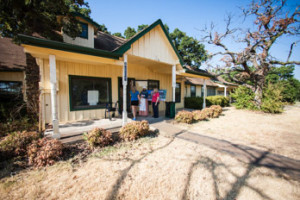
After Grant purchased the house, his curiosity got up about a story of logs he heard from the previous owner. He opened a small opening in one of the walls and saw the logs for himself. He sent a text with a photo of the logs to me. I called Andy Eads and Peggy Riddle who I work with at the Denton County Office of History and Culture. Since then, the County, Town, and local history advocates have been working to find a way to preserve this log cabin.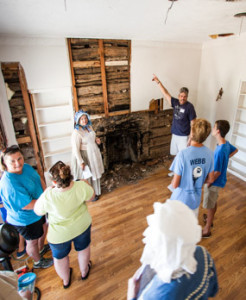
Modern residential additions have been made in every direction around the cabin, including newer gabled roofs over the original cabin. You would never know a log cabin was preserved within the walls of this farm house. It is a time capsule, waiting to be carefully opened.
Dr. David Stahle, Professor and Director of the Tree-Ring Laboratory at the University of Arkansas, cored the logs of the cabin to age them. The dating process shows the logs were cut between 1857 and 1860, with the structure most likely being built in 1860
The cabin sits on an approximate four acre site in West Flower Mound. The property was part of a Republic of Texas Land Grant that was patented in 1854 by William Gibson. The original survey was for 360 acres and the cabin is a one room structure measuring approximately 16’ x 16’, which is the minimal size structure required to perfect the land 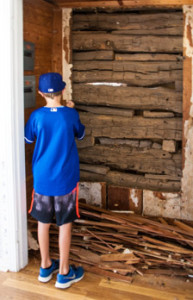 grant.
grant.
The Historic Perspective
Texas was land rich and people poor when she won her independence from Mexico in 1836. The new Texas government enticed settlers to the wilds of Texas with free land. A family could receive 640 acres, if they built a 16’ x 16’ log cabin. Single men got 320 acres.
But North Texas had Indian problems, and the one thing settlers like more than free land was there scalp. Sam Houston took it on himself to calm the Indian problems in North Texas and clear the path for new settlement.
Houston sent out messengers to gather the warring Indian chiefs of the nine tribes in North Texas. Houston’s goal was to create peace through signing a treaty at Bird’s Fort, six miles south of present Flower Mound. Houston spent a month camping on the prairies around Bird’s Fort, waiting for the chiefs to be assembled. He likely saw The Flower Mound and possibly used it as a lookout for the Indian Chiefs.
Houston grew weary of waiting for and returned to Austin after a month. But the Treaty of Bird’s Fort was agreed to by the nine tribes in 1843 and ratified by the Republic in early 1844, clearing the way for the settlement of North Texas.
The Republic of Texas contracted with empresarios to bring new settlers to Texas. Peters Colony was one of these contracts and offered land grants to bring settlers to North Texas. The Missouri Colony of Peters Colony settled much of Flower Mound and Northern Tarrant County.
The Missouri Colony of Peters Colony
In May of 1844, sixteen families from Platte County Missouri loaded their wagons to brave their move to the wilds of North Texas. Most were related in some way. William Gibson, who appears to have built this cabin, was among this group of early pioneers.
The journey was not easy. Swollen Rivers and hostile Indians plagued the journey. The settlers had to camp for three weeks waiting to cross the Trinity River.
The last leg was among the hardest. Moving wagons through the virgin Cross Timbers was difficult. The Crosstimbers was full of Postoak’s, Blackjacks, and thick underbrush. Some called it the Cast Iron Forest because it was so difficult to cut through. The Missouri Colonist were among the first white settlers to carve a trail into what is now Flower Mound.
After days of hacking through the Crosstimbers, the Missouri Colony emerged on some small prairies. The first was in Northern Flower Mound, known as Holsford’s Prairie now (named for Holford family who were also Peters Colonist). The second prairie they emerged on was Long Prairie.
Long Prairie was a welcome site for the weary travelers. Long Prairie was about four miles long and one mile wide. Toward the East end was a mound that rose 50’ above the surrounding area, later named Flower Mound.
From the Flower Mound, settlers could survey not only their past travels, but their future ahead. Many made their new homes on Long Prairie, not far from the Flower Mound.
It was on the Southwestern end of Long Prairie that William Gibson built this one room log cabin in 1860, nestled near a corner of the Cross Timbers. Denton Creek was not far south, and Williams Church, Lonesome Dove Baptist Church, was just across the creek. The Missouri Colonist started Lonesome Dove Baptist Church in 1846 and moved it to Denton Creek in 1847.
Clearly, this was not the first cabin William Gibson built in North Texas, but it may have been the last. He died in 1865, just five years after this cabin was built.
Like this log cabin, we have only revealed bits and pieces of William Gibson’s life and what life was like for the early settlers of Flower Mound. More will be revealed as we savor and share the wonderful opportunity to preserve this historic treasure.
Preserving the Cabin
The vision of The Flower Mound Foundation and Long Prairie Cabin Commission is to restore this cabin to its original stature, under the ancient post oaks where it has sat for 155 years. The ground this cabin sits on is sacred for many of us that have visited the cabin site and contemplated what is was like in the 1800’s, and what it can be upon renovation.
The site is at the edge of where the Long Prairie transitions to the Cross Timbers. Malone’s Grist Mill sat just North, and Lonesome Dove Baptist Church was not far South. The Cast Iron Forest of the Cross Timbers was directly west, protecting the cabin from Comanche war parties that rode the Grand Prairies beyond.
We propose adding a very old barn the Denton County Historical Commission saved to this site. This barn was taken down off Dixon Lane and is also a historic Flower Mound artifact. We would have a genuine historic homestead honoring and replicating the lifestyle of our earliest settlers.
Additionally, we propose to plant a large garden with the food crops early settlers grew. The cabin and barn will house period furnishings and farm implements.
This site will become a genuine historic homestead. It will be a special place for our children, and their children, to understand their heritage and the hardships of our early settlers.
Some say we should tear this cabin down and doze these trees. Then pile up the old logs from the cabin on a concrete slab a few miles to the East and call this our history and heritage. This would be cheaper. To many of us, it would also be tragic.
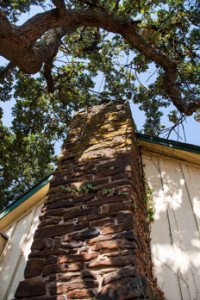 It will take significant sums of money and considerable work by many to SAVE THE CABIN at this original location. But, we must try. We have lost too much already and will never have the chance to save this treasure again. Won’t you help us?
It will take significant sums of money and considerable work by many to SAVE THE CABIN at this original location. But, we must try. We have lost too much already and will never have the chance to save this treasure again. Won’t you help us?
To help or contribute, please contact The Flower Mound Foundation at www.TheFlowerMound.com or follow us on Facebook at Long Prairie Cabin-Save the Cabin.

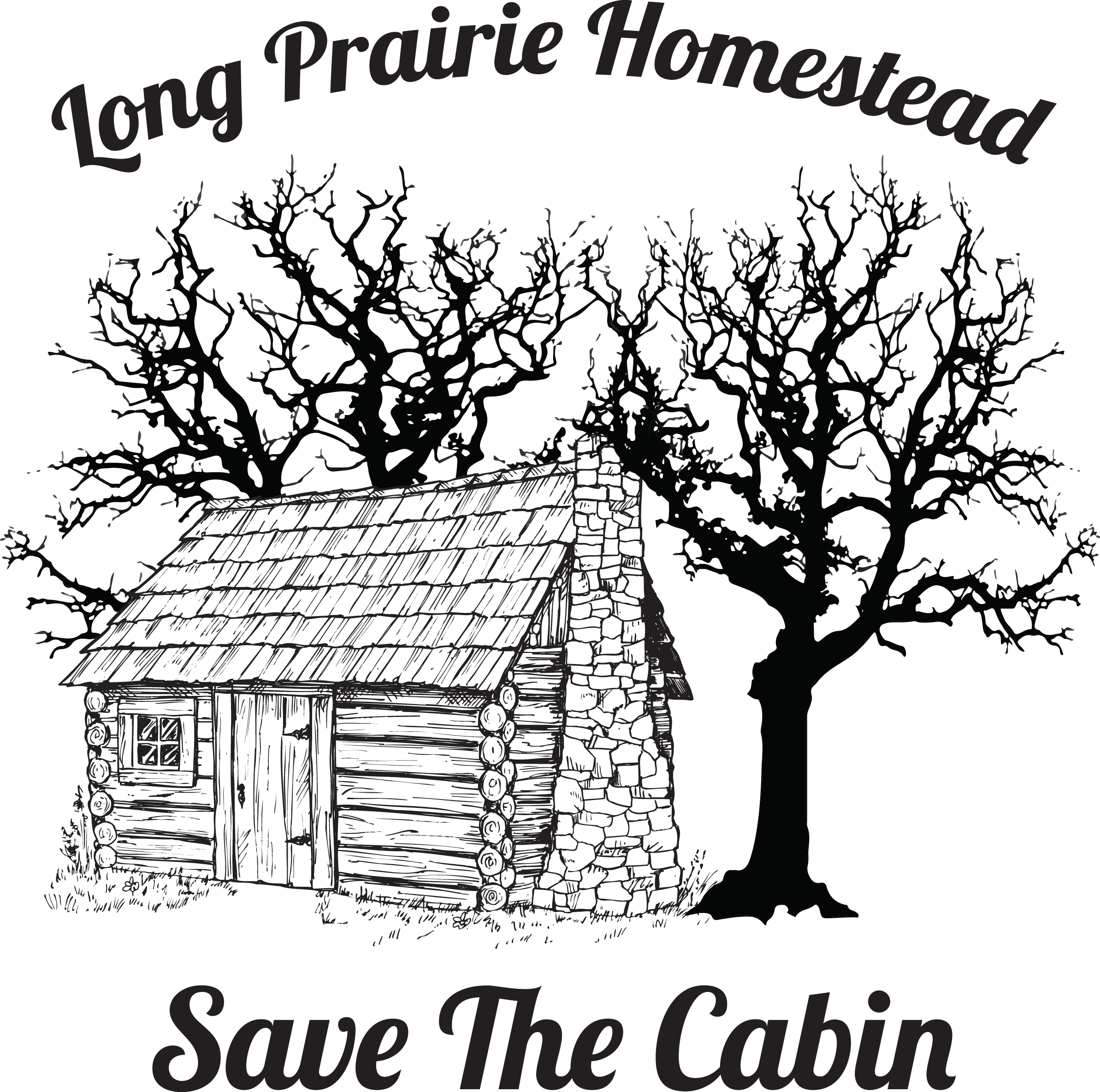
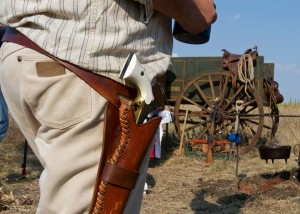
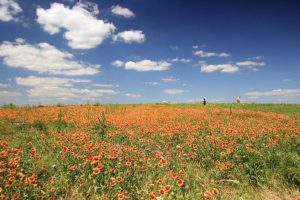
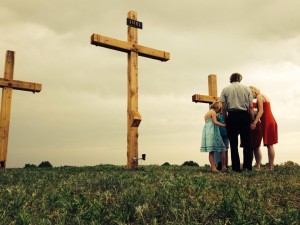
Couldn’t make the meeting but am very interested in helping preserve this cabin, and the land on which it stands, so put me on your mailing list.
With so much of “old” Flower Mound bulldozed and/or demolished I think it is vital to keep some of our history in view and not just in history books.
Most awesome thing I have read in years! It should be preserved…I consider Lewisville and Flower Mound my ‘Hometown’ that’s where I was raised and love it!
The discovery of this log cabin is one of those once-in-a-lifetime opportunities. The idea of being able to step back 150 years into the past and preserve it forever fires the imagination.
I appreciate so much the efforts of all who are trying to preserve it. William Gibson was one of three Gibson brothers — James, Jesse and William — who brought their families along with the Eads, Hallfords, Allens, Fosters, Smiths and others to Texas from Missouri. Jesse was my 3g grandfather. As an amateur genealogist, I have been researching this side of my family for the past two years.
I told my daughter that buried treasure of gold and silver would not have been as exciting as this log cabin for me to find.
Thank you Mark Glover for such a well-done report and the incredible amount of research you put into it.
Hope you get to save and restore this cabin on its original site. Wonderful history discovered right under our noses, just like in Plano at the Collinwood House (5400 Windhaven Drive) Hope again that both municipalities realize the value of these treasurers to both community members, visitors, future generations and Texas history. There’s nothing quite like seeing and touching the real thing to understand what you cant quite “get” from reading about it in a book or from a sign after its gone.